Analysis of Sources
The earthquake source greatly affects seismic waves and ground motions
as their origin.
In the case of the 1995 Kobe earthquake, we were surprised at
the long-period and short-duration features of the ground motion
causing the Hanshin-Awaji earthquake disaster (Fig. 2).
We have identified the directivity effect as the cause of these
features.
According to this effect, seismic waves from various parts of the
fault form a large long-period puls in the forward direction of fault
rupture (Fig. 3, Koketsu, 1996;
Yoshida et al., 1996).
|
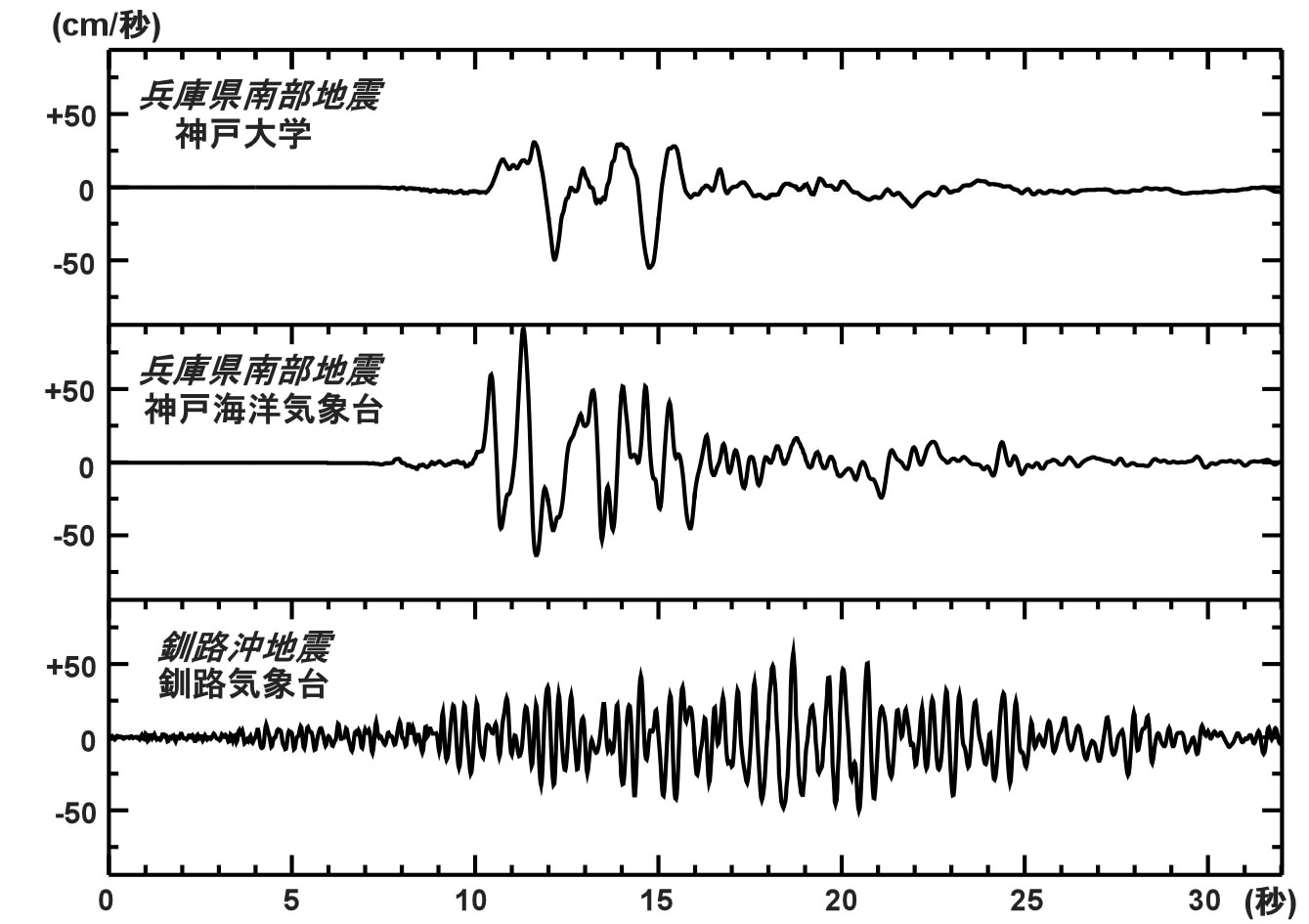
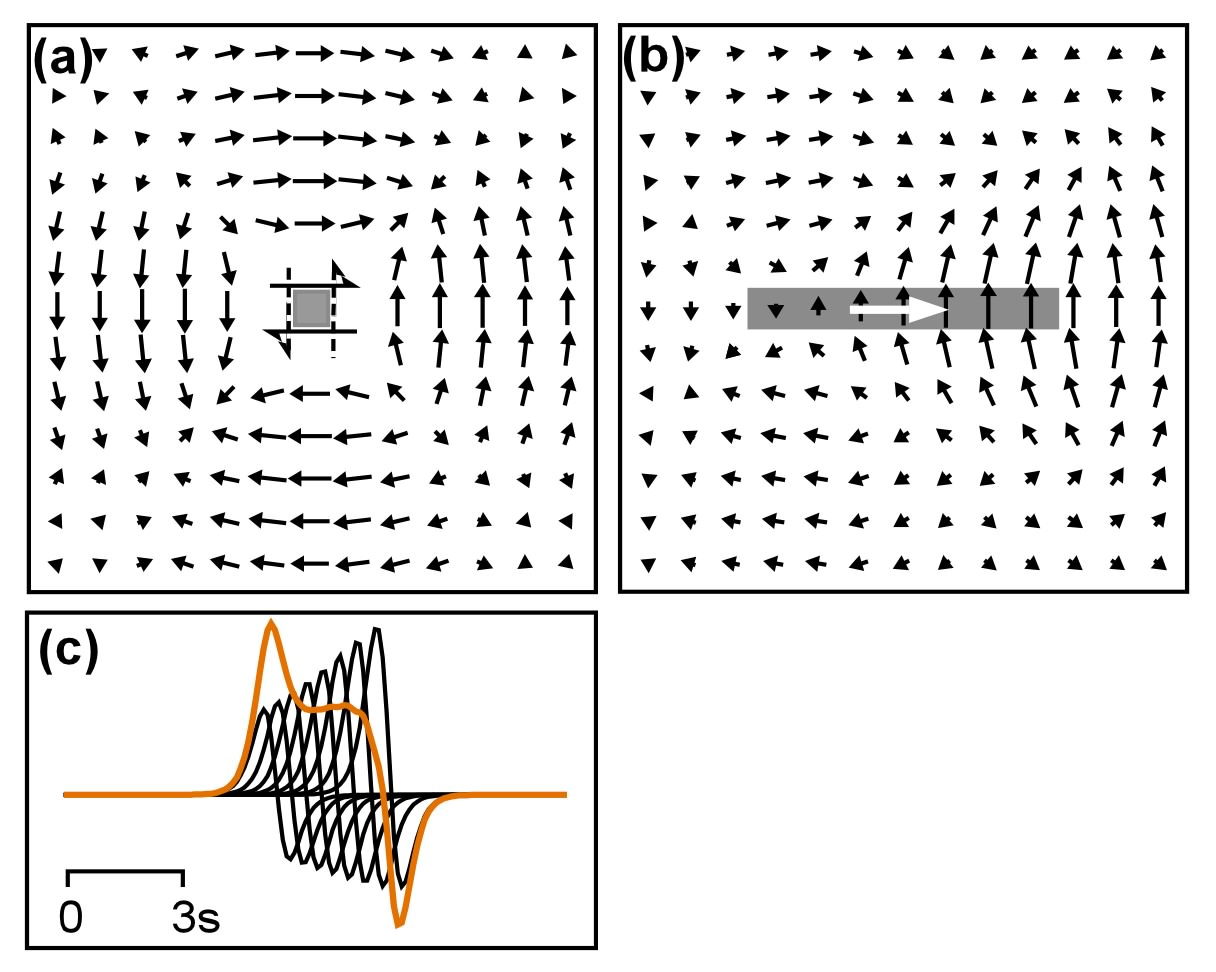
|
|
Fig. 2. The ground motions at the Kobe university
(upper) and the Kobe JMA station (middle) during the 1995 Kobe
earthquake are compared with the one observed at the Kushiro JMA
station during the 1993 Kushiro-oki earthquake (lower).
|
Fig. 3.
(a) The shakings from a point source show the four-lobe pattern and
the two diagonals partition them into the four lobes.
(b) However, an earthquake source is a fault with some extent.
Its rupture is initiated at a point and propagates at a speed of a few
km/s over the fault plane.
(c) The seismic waves from the parts of the fault then overlap each
other with time lags.
The way of overlapping varies with the direction, so that the
magnitude of the shaking becomes directive.
The overlapping provides it with a longer-period waveform.
|
|
|
Since the complex velocity structure (Fig. 4) affected seismic
ground motions during this earthquake, we have developed a method for
simulating ground motions in such a 3-D structure.
If we use Green's functions calculated in the 3-D structure, the
result of fault modeling will change significantly and we can obtain a
more accurate model (Fig. 5).
The city center of Kobe is locate at around x =
20km, where a slip larger than 2m is recovered in the accurate 3-D
model.
This result suggests positive correlation between the seismological
slip distribution and the damage distribution in the Hanshin-Awaji
earthquake disaster (Koketsu and Kikuchi, 2003).
|
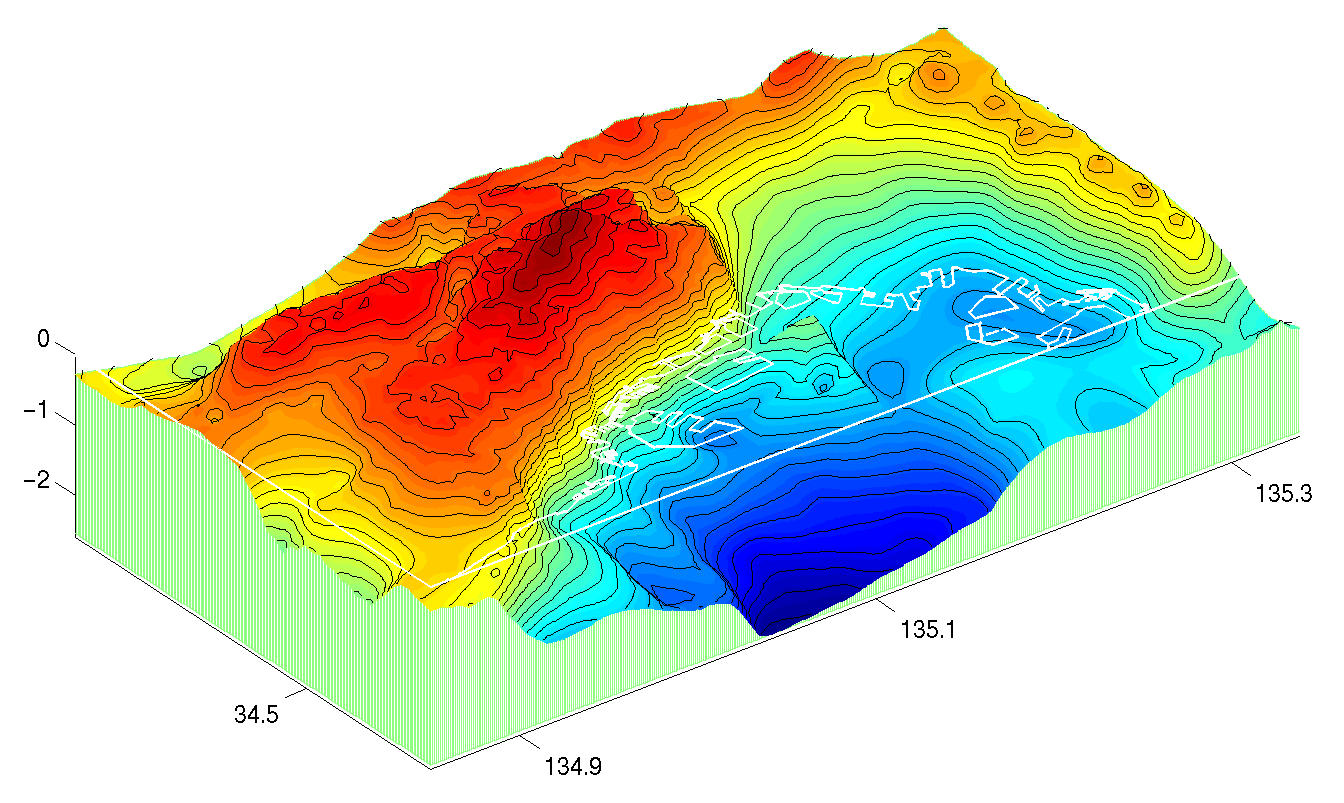 |
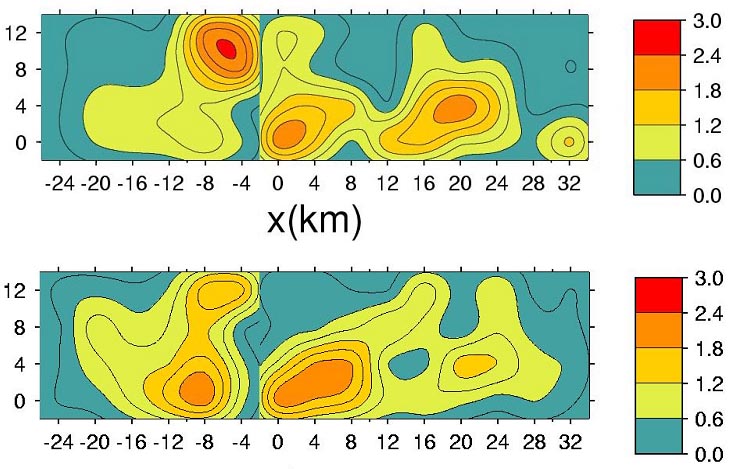 |
|
Fig. 4. 3-D velocity structure in the Osaka basin
(topography of the basement surface).
|
Fig. 5. Fault models in the 3-D (upper) and 1-D (lower)
structures.
|
|
|
Analysis of Velocity Structures
It is important for these kinds of studies to reveal the structures of
the crust, the subducting slab and sedimentary layers overlying them,
that greatly affect seismic waves and ground motions.
For this purpose, we have developed a method of ray tracing
(Koketsu and Sekine, 1998),
and carried out seismic tomography for the S-wave velocities and
Q-values beneath the Japan islands (Fig. 6).
In addition, we also developed a joint tomographic inversion of
seismic and gravity data and obtain the accurate velocity
structures in the Osaka and Kanto basins (Figs. 4 and 7.
Koketsu and Higashi, 1992;
Afnimar et al., 2002).
|
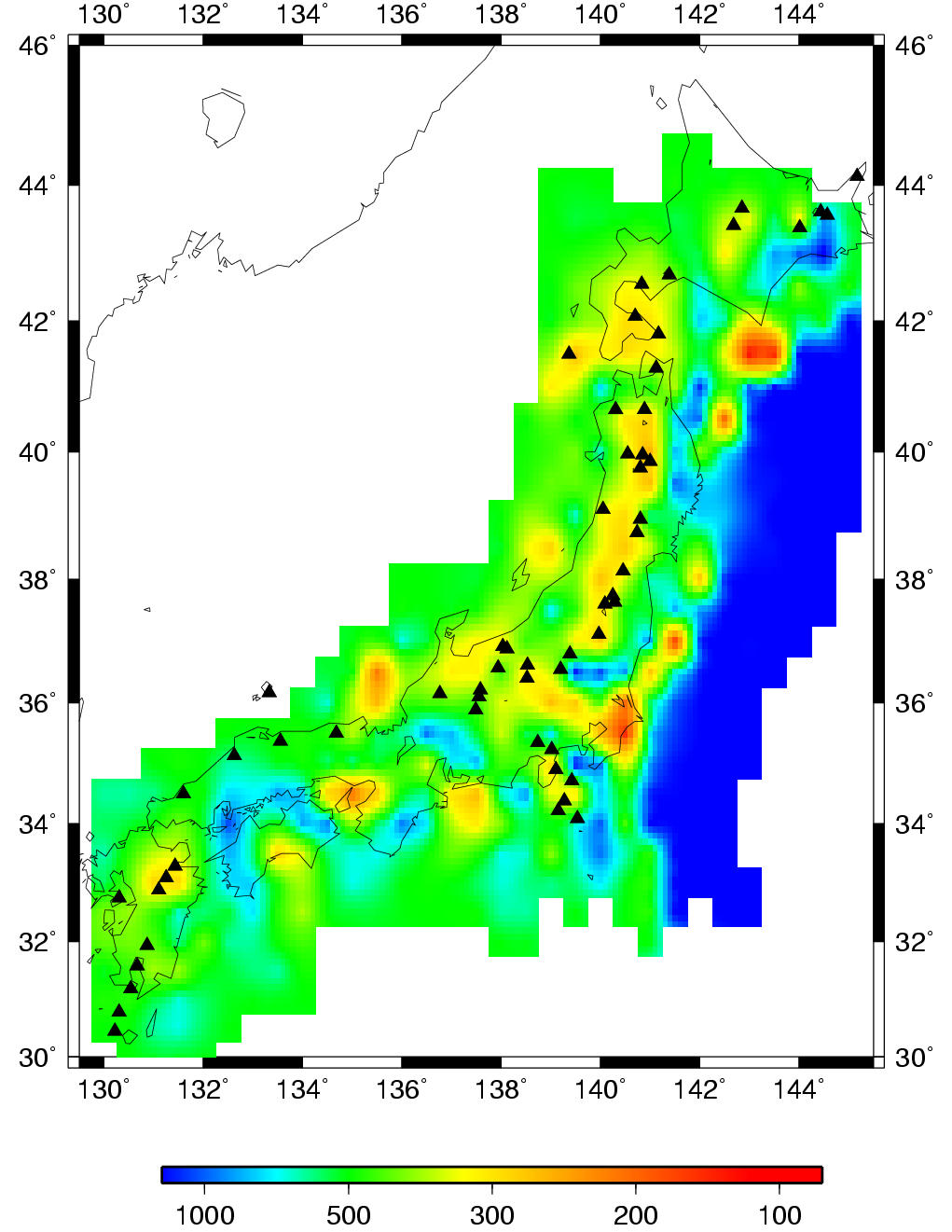 |
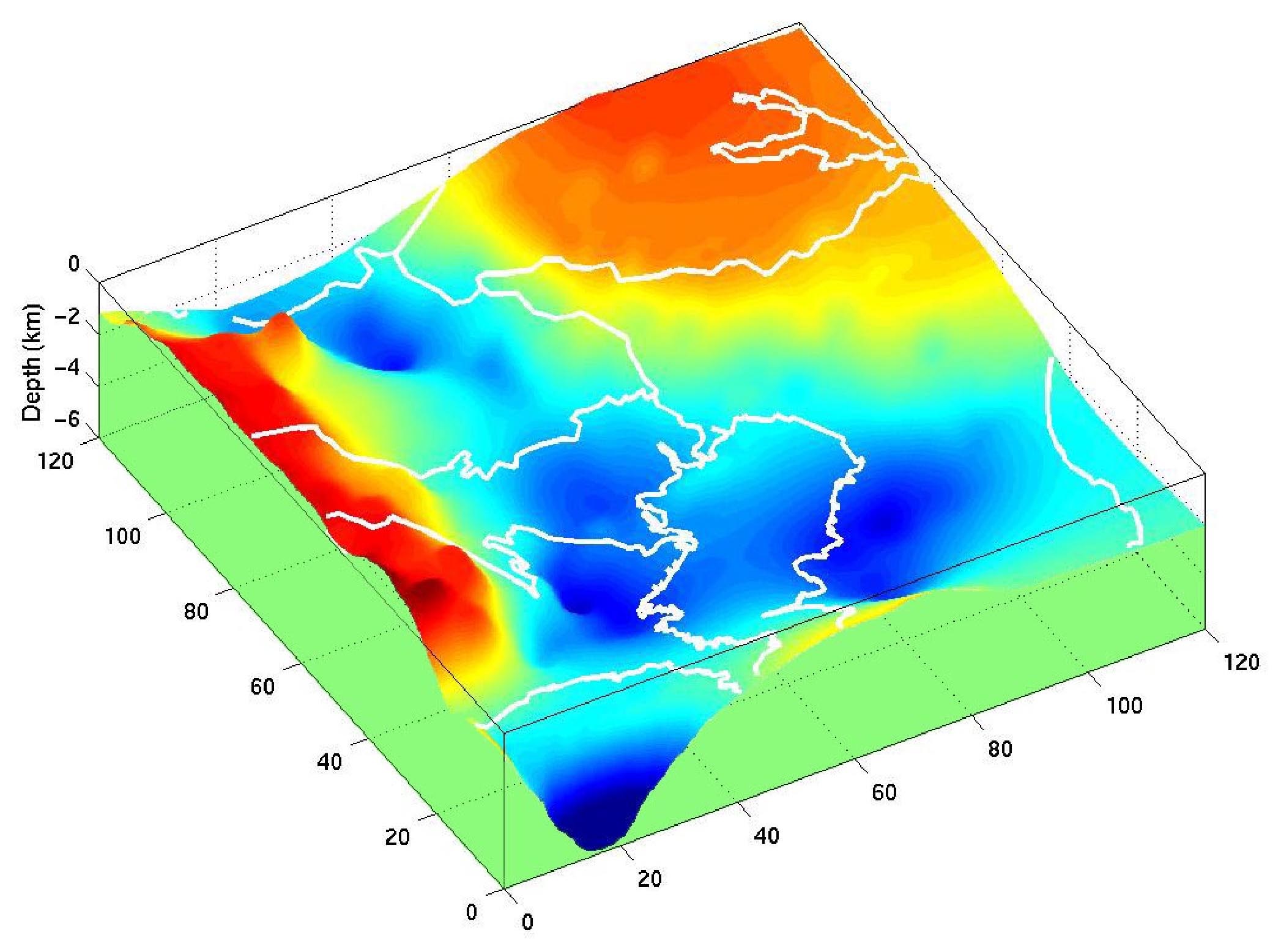 |
|
Fig. 6. Distribution of Q-values at a depth of 40km
(reds indicate lower Q-values and higher attenuation).
We can see low Q along the volcanic front, and high Q at the
subducting slabs.
|
Fig. 7.3-D velocity structure in the Kanto basin
(topography of the basement surface).
|
|
|
|
Strong Motion Observation and Simulation
Observations promote researches on seismic waves and ground motions
as in other disciplines of seismology.
In order to illustrate how seismic strong motions are built up in a
source region, we are conducting strong motion observations in the
Izu-Suruga Bay area, the southern part of the Tokyo metropolitan area
and so on.
We also carried out temporary strong-motion observations for the
earthquake swarm associated with the 2000 Miyakejima eruption
(Kikuchi et al., 2001)
and aftershocks of the 2003 Tokachi-oki earthquake.
There are six hundred strong-motion observation stations in the Kanto
basin.
We have developed a system widely collecting their data (SK-net,
http://www.sknet.eri.u-tokyo.ac.jp/) in cooperation with the
earthquake data center, and investigated how the seismic ground motion
propagated within the basin.
The surface wave inside the basin propagates more slowly
than that outside, so that their wavefronts separate from each
other and the refracted wave heals the discrepancy in the speed
of advance of the wavefronts inside and outside the basin.
This refracted arrival forms a new oblique wavefont traversing the
basin (Fig. 8, Koketsu and Kikuchi,
2000).
We also confirmed that a strong-motion simulation
(Furumura et al., 2003;
Koketsu et al., 2004)
in the 3-D velocity structure of Fig. 6 can recover these
observations (Fig. 9).
|
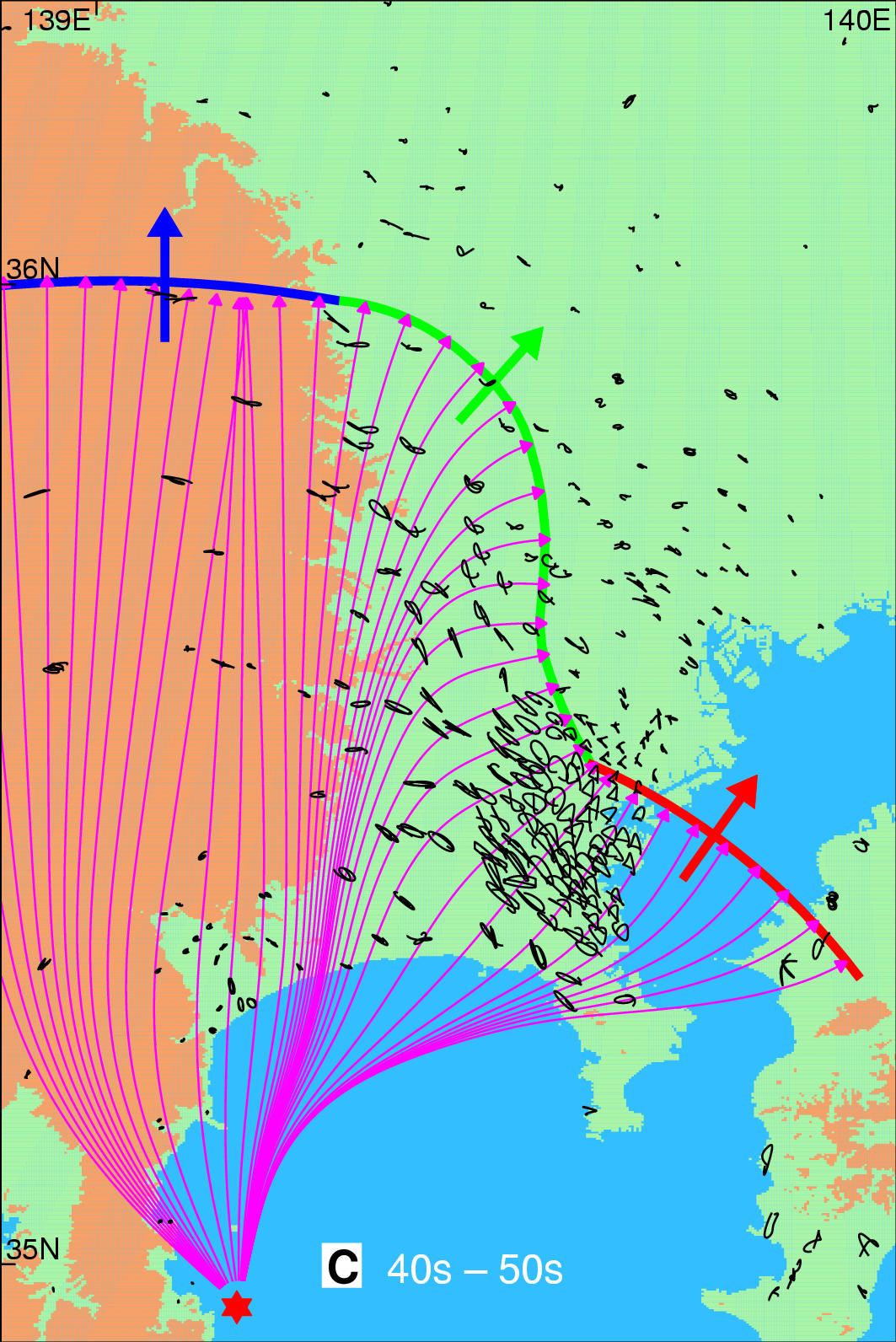 |
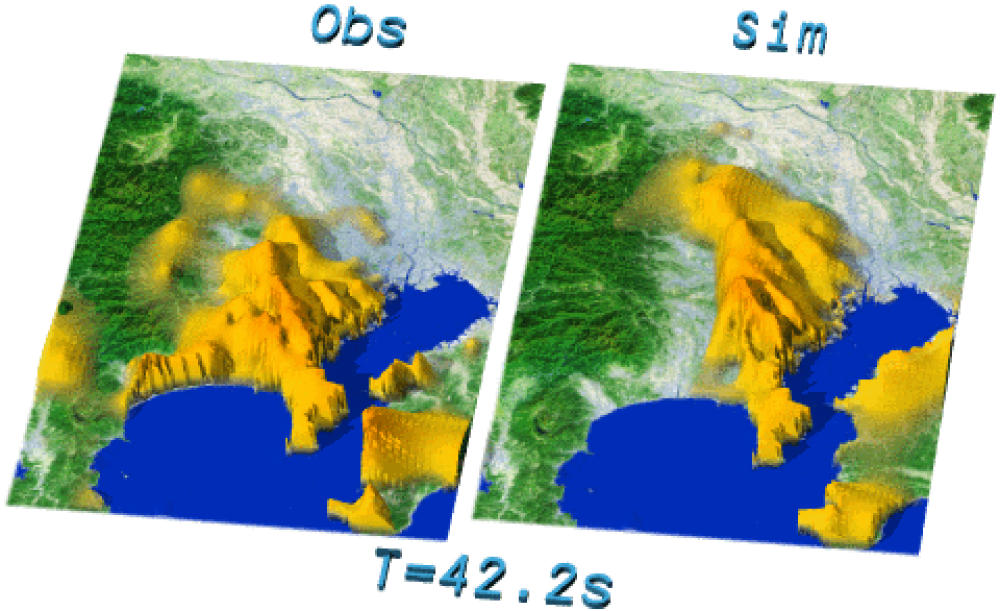 |
|
Fig. 8. Propagation of ground motions from the 1998
Izu-hanto Toho-oki earthquake (star symbol) in the Kanto basin.
|
Fig. 9. Comparison of the observation (bs) and
simulation of the ground motion propagation.
|
|
Jul. 03, 2004
Jul. 23, 2006
Aug. 27, 2010
Can't open /home/taro/html/saigai/cgi-enabled/cgi-enabled/ouyou2.cnt







